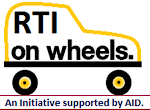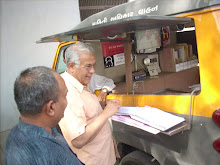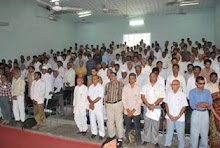The Hindu: National: Friday, May
06, 2016.
Documents
accessed by Greenpeace India under RTI law shows that mining is on in four
inviolate forest areas and 117 zones encroaching river beds.
As many as
417 out of 835 current and future coal blocks must be categorised as ‘inviolate
areas’ as per hydrological parameters, information obtained under the Right to
Information Act by Greenpeace India, and released on Thursday has revealed.
These coal blocks, if auctioned, pose serious threats to fresh water sources
present in the forest areas, the NGO has said. These coal blocks mostly fall in
the five states: Chhattisgarh, Jharkhand, Maharashtra, Odisha and Madhya
Pradesh.
According to
a statement put out by the organisation, last year the Forest Survey of India
(FSI) assessed 835 coal blocks based on the draft parameters for identification
of inviolate forest areas. For applying the hydrology parameter, the Union
Environment Ministry recommended excluding 250 m. on either side of a major
water stream while marking the boundaries of coal blocks. This renders over
half of the coal blocks as ‘partially inviolate’, according to the RTI information.
The documents
received by Greenpeace India under RTI, and made available to The Hindu,
involve communications by the Forest Survey of India, Ministry of Environment
and Forests and Coal Ministry.
The FSI has
noted in a communication to the Union environment ministry that 121 of the 835
coal blocks assessed had ongoing mining activities, and of these 4 were in
‘inviolate forest’ areas and 117 were affected by the hydrological layer, which
means they encroached upon river beds or water streams. The Coal Ministry in
its communication raised objection to the ‘hydrological layer’ proposed by the
Environment Ministry contending that almost all coal mines in the country
encroached upon river basins, including that of Damodar, Mahanadi, Wardha,
Sonbhadra and Godavari.
Drought
and mining
“Mining in
the forests even beyond the 250m. of the river banks often has a dramatic
detrimental impact on the catchment areas, including water pollution, erosion
and worsening water scarcity during dry season,” says Nandikesh Sivalingam,
senior campaigner, Greenpeace India. He adds that if all the streams in the
river basins are to be taken into consideration, the impact on central India’s
water sources could be much higher. Raising concerns that given the drought
situation in the country such inevitable consequences of coal mining could
destroy precious freshwater sources, Mr. Sivalingam said that it's been close
to four years since the exercise to identify inviolate areas started but the
Union environment ministry is still dragging its feet on this policy while the
coal ministry is going ahead with auctioning and allotting these forest areas.
In its
statement released on Thursday, Greenpeace India has demanded that the Union
environment ministry fix a deadline to finalise, publicise and enforce the
inviolate policy and publish the forest areas/coal blocks that are inviolate
along with the geo-referenced maps, for all the concerned stakeholders -
including affected forest communities - to be consulted before the land is
considered for mining.














































































